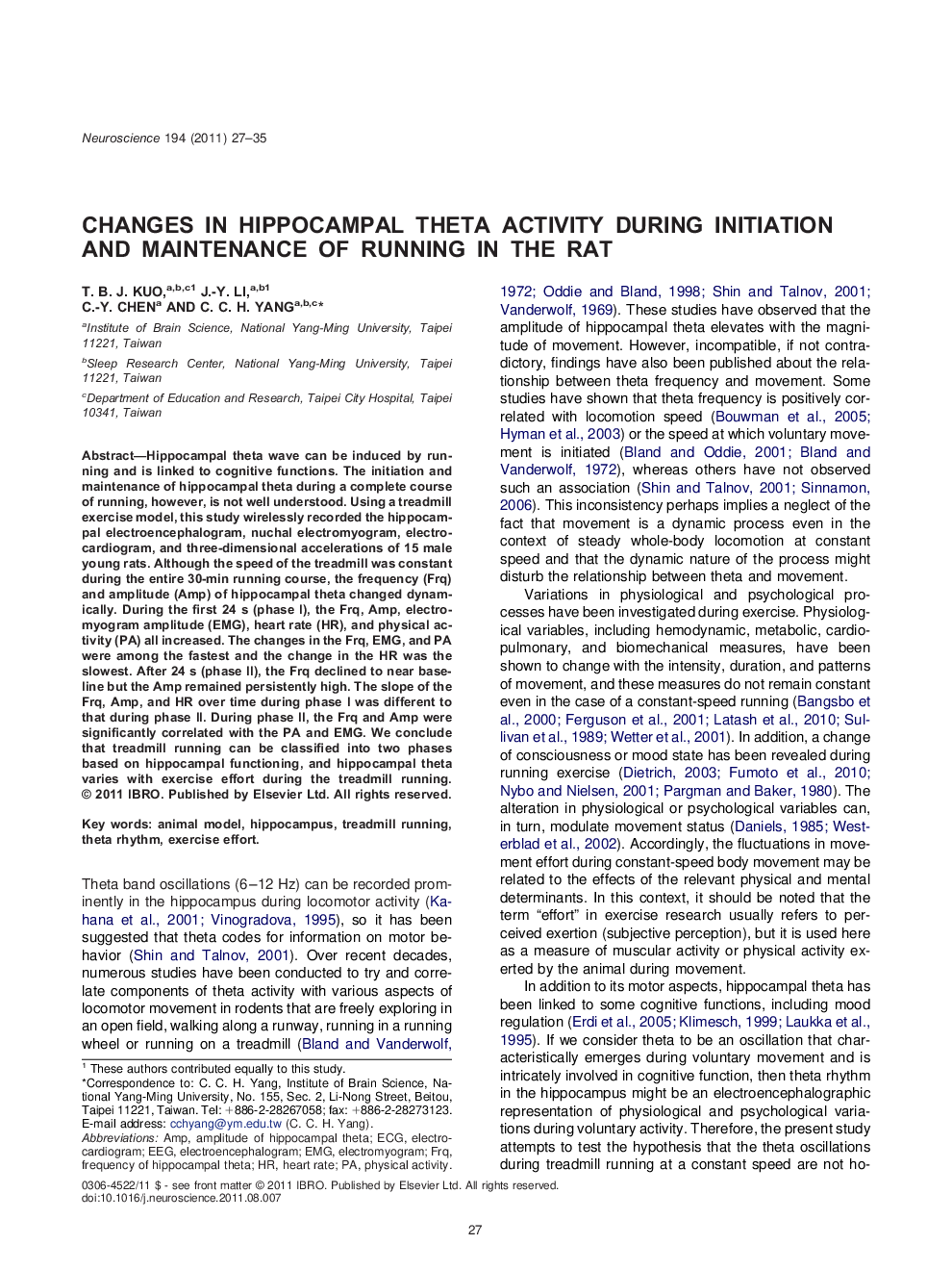| Article ID | Journal | Published Year | Pages | File Type |
|---|---|---|---|---|
| 4338795 | Neuroscience | 2011 | 9 Pages |
Hippocampal theta wave can be induced by running and is linked to cognitive functions. The initiation and maintenance of hippocampal theta during a complete course of running, however, is not well understood. Using a treadmill exercise model, this study wirelessly recorded the hippocampal electroencephalogram, nuchal electromyogram, electrocardiogram, and three-dimensional accelerations of 15 male young rats. Although the speed of the treadmill was constant during the entire 30-min running course, the frequency (Frq) and amplitude (Amp) of hippocampal theta changed dynamically. During the first 24 s (phase I), the Frq, Amp, electromyogram amplitude (EMG), heart rate (HR), and physical activity (PA) all increased. The changes in the Frq, EMG, and PA were among the fastest and the change in the HR was the slowest. After 24 s (phase II), the Frq declined to near baseline but the Amp remained persistently high. The slope of the Frq, Amp, and HR over time during phase I was different to that during phase II. During phase II, the Frq and Amp were significantly correlated with the PA and EMG. We conclude that treadmill running can be classified into two phases based on hippocampal functioning, and hippocampal theta varies with exercise effort during the treadmill running.
▶Treadmill running can be classified into two phases according to EEG responses. ▶Theta frequency and amplitude differs in their response rate during initial phase. ▶Hippocampal theta codes for some aspects of perceived exertion during running.
